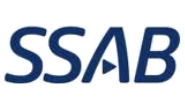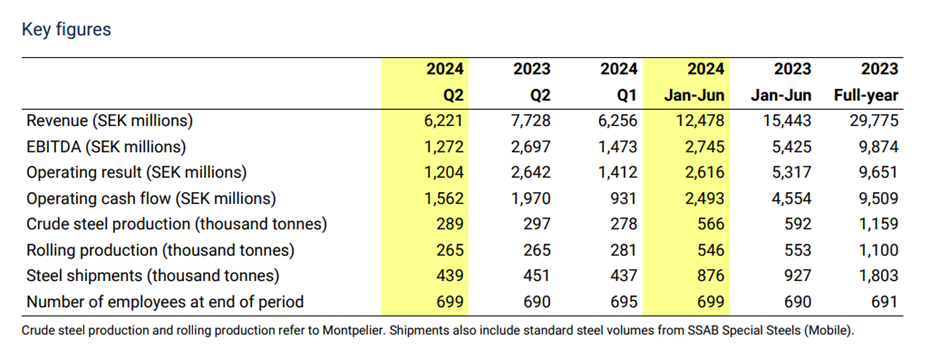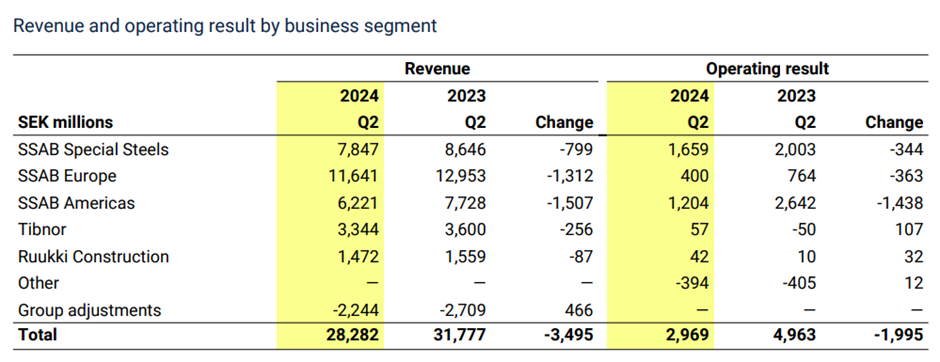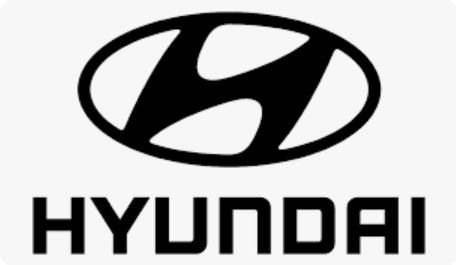International Steel Mills

SSAB adjusts output in weak Q3, readies for Q4 rebound
Written by Laura Miller
July 25, 2024
SSAB said lower plate prices in the US were the primary reason for reduced results in the second quarter.
With a dismal Q3 outlook, the Swedish steelmaker is adjusting production across its facilities. That includes moving up its annual US mill outage in anticipation of a better Q4.
SSAB Americas

Revenues in the Americas segment fell 20% year over year to SEK 6,221 million (~US$576 million), with operating results dropping 54% to SEK 1,204 million. Compared to the prior quarter, operating results were 15% lower, and prices were 7% lower.
SSAB said an uneven US market, mainly due to this year’s presidential election, impacted quarterly shipments. Ticking up just 0.5% from the prior quarter, Q2’24 shipments of 439,000 metric tons were down 2.7% from last year.
The company continues to ramp up production of its SSAB Zero steel, with 40,000 metric tons produced in Q2’24.
SSAB observed caution in the US market, mainly among service centers and construction machinery customers. But activity in the energy markets remained solid. On the company’s quarterly earnings call with analysts on Wednesday, CEO Martin Lindqvist noted a “stable trend” for railcars in the Americas.
With US and European service center inventories slightly lower than normal, restocking will take place, he said. But the company is taking a “cautious approach” at this time.
Group results

SSAB said declining heavy plate prices in the US and continued weakness in the European markets were the primary drivers for its reduced quarterly results.
The group’s operating results plummeted 40% y/y on revenues that dropped 11% (see chart above).
Outlook
SSAB presented a grim outlook for Q3, noting a more pronounced than normal seasonal downturn.
While Q3 shipments are expected to be somewhat lower in the Europe and Special Steels segments compared to Q2, they are anticipated to be significantly lower in the Americas.
The company also foresees lower realized prices in the Americas and Europe and somewhat lower prices in Special Steels.
As such, the company is adjusting its production downward via planned maintenance outages to meet lower demand.
SSAB Americas is moving up this year’s planned maintenance outage at its mill in Montpelier, Iowa. The outage will now take place fully in Q3 and not extend into Q4 as previously planned. With a “more extensive” plan for this year, maintenance costs are slated to be SEK 520 million vs. SEK 320 million in 2023.
“So, we expect that Q3 is a bit slower, yes,” Lindqvist remarked. “Let’s use that opportunity to do the maintenance and then be ready to kick off when the market turns.”
Bullish on US plate market and wind energy
An analyst asked if the structure of the US plate market is changing and if supply discipline is disappearing due to aggressive competition. Lindqvist doesn’t think so. He believes the US plate market is structurally undersupplied and anticipates a rebound in that market, potentially in Q4.
He noted that although plate prices are falling, they are falling from very high levels and are still good compared to past averages.
“Given the focus in US with onshoring with Inflation Reduction Act, with infrastructure bill, we see a very good possibilities and bright future for plate products within energy, within bridges, within tank cars, railcars and so on,” he commented.
Lindqvist said the company continues to see strong demand and lots of interest from US wind tower fabricators for its SSAB Zero steel.
SSAB remains bullish on the wind market. Lindqvist believes that, despite project cancelations and delays, all those big offshore projects will eventually come to fruition.
“Wind, I would say, in energy is probably one of the segments where we see the best possibilities short and mid-term,” he remarked.
DOE grant
SSAB noted that it continues to discuss a potential grant of up to $500 million from the US Department of Energy to construct a DRI/HBI facility in Mississippi.
When asked about the potential project, Lindqvist commented, “We see big interest for our types of steel in the future,” as many US customers are now interested in more “environmentally-friendly products.”

Laura Miller
Read more from Laura MillerLatest in International Steel Mills

POSCO mulls teaming up with Hyundai on Louisiana mill
South Korea’s POSCO is eyeing linking up with Hyundai Steel in the project to build a steel plant in Louisiana, according to media reports.

Global steel production edges lower in February
February’s global raw steel output is tied with last December's for the fourth-lowest monthly production rate recorded over the past two years.

Japanese PM cites ‘unjust political interference’ in Nippon/USS deal: Report
Japan’s Prime Minister Shigeru Ishiba said on Monday that former President Joe Biden’s decision to block Nippon Steel’s buy of U.S. Steel was “unjust political interference,” according to a report in Reuters. This comes after another Reuters report on Friday saying that President Trump would not object to Nippon taking a minority stake in the […]

Opening briefs filed in Nippon/USS lawsuit vs. US government
Together, Nippon Steel, Nippon Steel North America, and U.S. Steel announced the filing of their opening brief in their litigation to invalidate the government’s decision to block their announced merger. The brief lays out “how President Biden made a predetermined decision for political reasons, not national security, causing CFIUS to engage in a sham review […]

Hyundai mulls building $6B sheet steel mill in southern US
Hyundai Motor Group is reportedly considering building a sheet steel mill just south of Baton Rouge, La.
